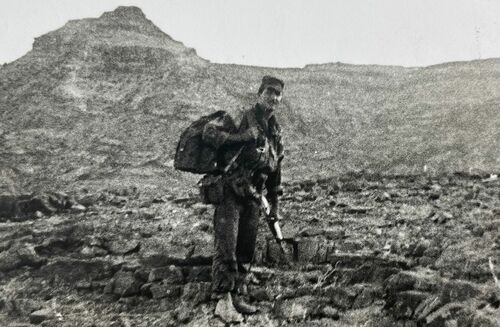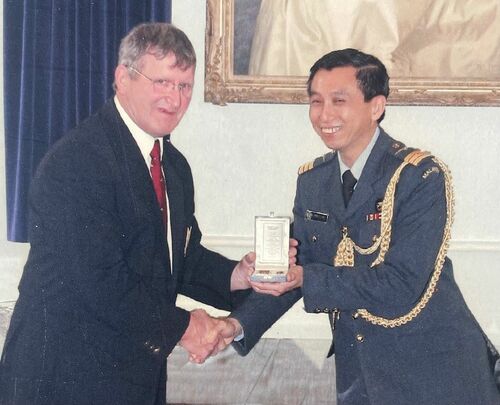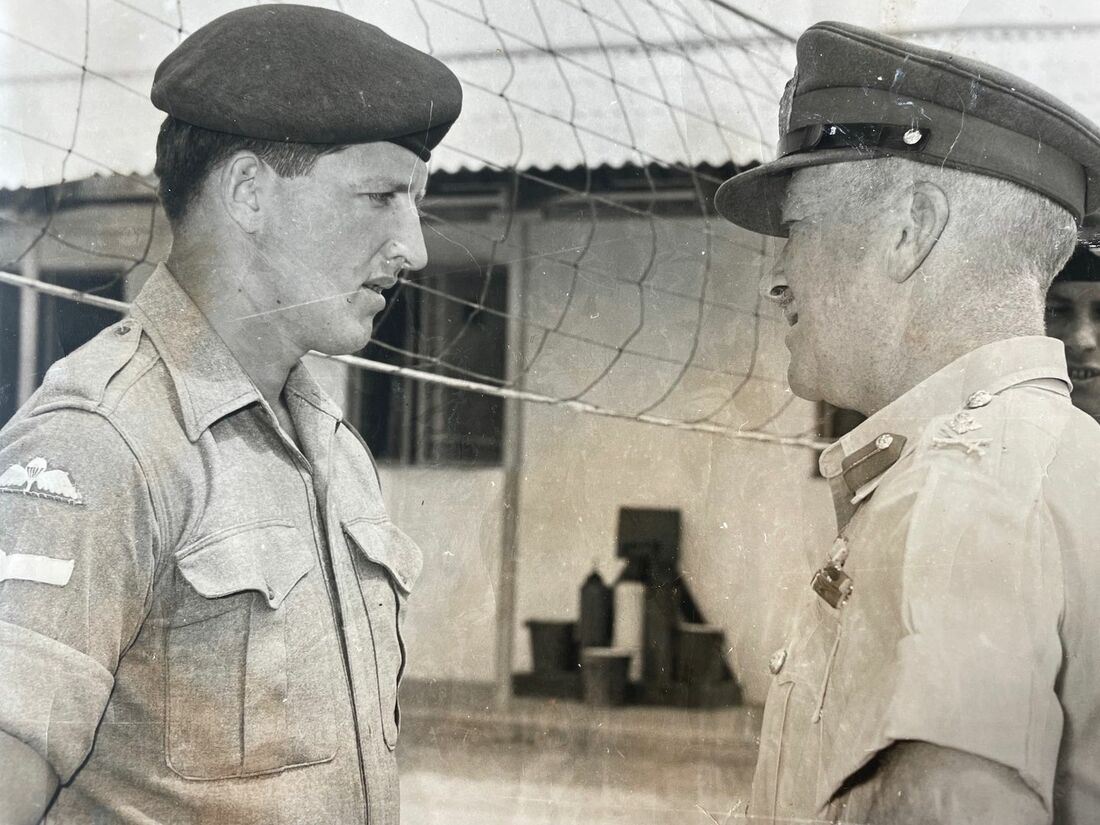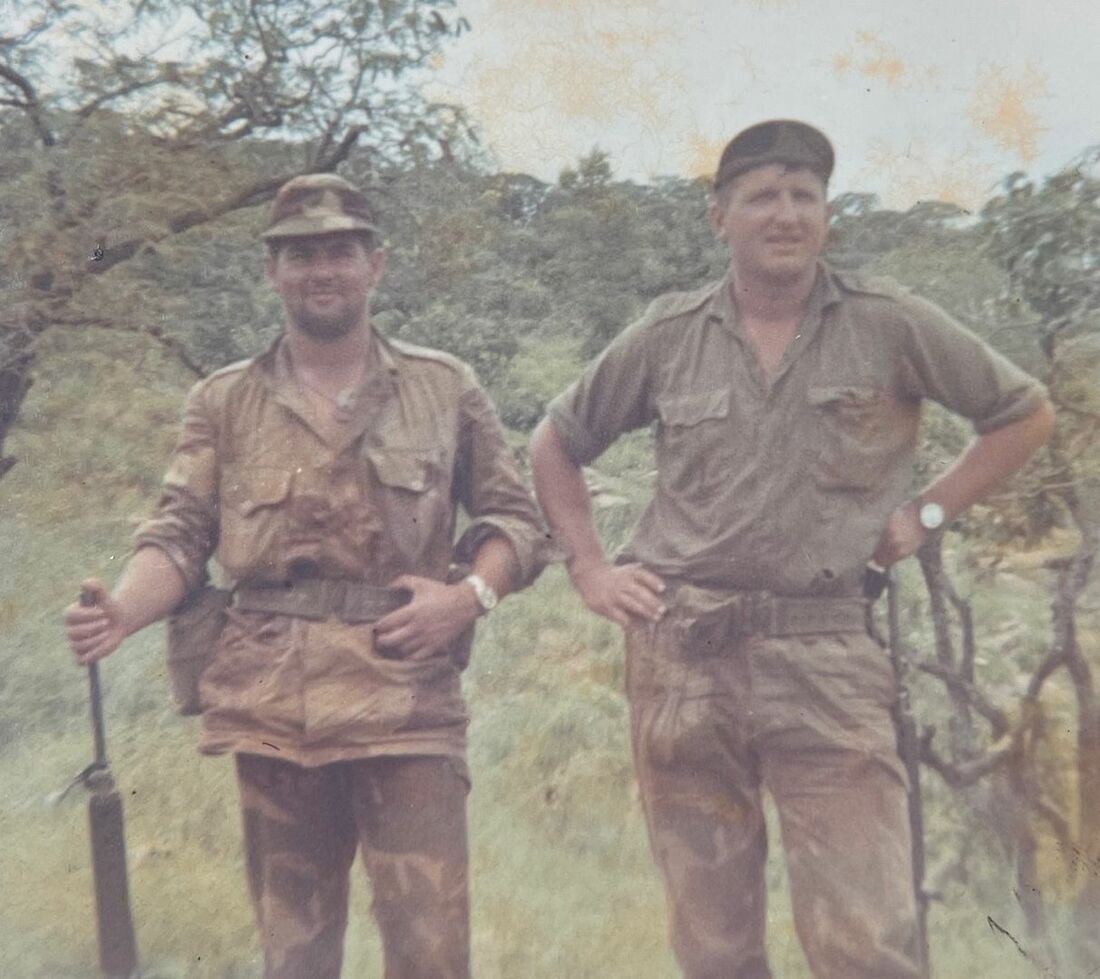Auction: 24001 - Orders, Decorations and Medals
Lot: 300
The outstanding campaign group of six awarded to Trooper R. B. C. Tattersall, 22 Special Air Service, late Canadian Guards, Parachute Regiment, South African Recon Commando and Rhodesian Special Air Service - by all accounts a member of the famous ill-fated 9-man 'Edwards Patrol' on the Radfan in April 1964
General Service 1962-2007, 3 clasps, Borneo, Radfan, South Arabia (23774107 Tpr. R. B. C. Tattersall. SAS.); Rhodesia, Exemplary Service Medal, with rosette upon riband (724700 WO2 Tattersall R. B. C.); Rhodesia, General Service Medal (4700 A/Sgt R. B. C. Tattersall.); Canada, Special Service Medal, 1 clasp, Nato Otan (SB178954 Gdsm. R. Tattersall), privately engraved naming; Malaysia, Federation, Pinjat Jasa Malaysia; Zimbabwe, Independence 1980, officially numbered '08235' to the rim, mounted court-style as worn, very fine
Roger Brian Carden Tattersall was born at Morecambe on 30 June 1938 and emigrated to Canada in 1956 as a 17-year-old. It was there that he found himself stood outside an Canadian Army recruiting office, encumbered by problems with his shoes. In that moment he decided to enlist in the Canadian Guards. While serving with the Canadians, he was deployed to West Germany in a NATO role with the Army of the Rhine.
He later left Canada, returning home, where initially he became a mobile car mechanic with the AA. Clearly looking to see some action, in 1961 Tattersall enlisted into the Parachute Regiment, where he became a friend and colleague of Peter McAleese in 'A' Company, 1 PARA. Their careers would then be closely linked for years to come.
Both were posted to and served in Bahrain. Tattersall followed McAleese and passed selection, entering 22 SAS. They were then soon after deployed to Aden, with a number of sources stating that Tattersall served with 'A' Squadron on the ill-fated 'Edwards Patrol' in April 1964. Details are scant but an online source continues:
'Nine men from No. 3 Troop SAS were to be infiltrated into enemy-occupied mountains to mark out a drop zone for a landing by the Paras in the middle of the rebel's supposedly secure backyard. Water was a vital necessity even more important than bullets: each man had to carry approximately 7.3 kg of the precious commodity. Since Intelligence reports insisted that the patrol would be unlikely to encounter much enemy resistance and should be able to steal past the rebel's without engaging in any real fighting, ammo load was reduced. Each man carried four spare magazines of 7.62mm NATO for his L1A1 semi-auto battle rifle, plus a 50-round bandolier in the pack, as well as some extra .303in ammo for the patrol's single Bren LMG. It was stressed that ammunition must be conserved jealously and spent wisely and effectively.
Captain Edward's patrol encountered problems from the beginning. As they moved through the mountains, it soon became clear that the radioman was suffering from food poisoning and unable to keep pace. Thus, dawn found the SAS men far from their destination and they were forced to take cover for the day in a couple of old enemy "sangars", fighting positions made from piled stones on rocky ground that did not allow digging. As fate would have it, the men's hiding place was discovered by a goat herder.
Hundreds of local tribesmen were alerted and rushed to the scene from all directions, resulting in a day-long sniping duel between the jihadists and the SAS men. The troopers husbanded every round, shooting carefully.
Air support, in the form of RAF Hawker Hunter ground attack aircraft, came to the patrol's aid during the day and suppressed the tribesmen. As darkness fell, however, the air support was unable to continue. By then, the radioman had been killed; all of the men were wounded to one degree or another, some severely, since in the rocks of the sangar even near-misses from rifle bullets sprayed them with rock and lead fragments.
Knowing the rebels would try to overrun the patrol under the cloak of night, Captain Edwards led the break-out and escape of the SAS patrol in the darkness. He was killed in the attempt as the tribesmen, seeing their quarry escaping, swarmed after the patrol. The seven wounded survivors managed to make their way back towards British-controlled lines through the forbidding terrain. An Arab tracker and three other tribesmen were detected following the patrol's trail, and two SAS men hung back and hit the Arabs with a hasty ambush, cutting down all four with their L1A1s. Later in the night, another pair of guerrillas found and followed the patrol. They were killed as well.
Eventually, just after daybreak, the battered and bloody survivors encountered a British armoured car, which took the two most severely wounded back to base while the last five marched home. Despite the long ordeal, day-long firefight against hundreds of angry guerrillas, and two ambushes, none of the men had run completely out of ammo. Casualties among the enemy were unknown but must have been quite extensive.
Although the majority of the patrol survived this epic encounter, any good to come of it was marred when the rebels desecrated the bodies of the Captain and the Signaller and paraded through the streets displaying their severed heads; shades of US Army helicopter pilots in Mogadishu three decades later.'
Tattersall had served with the SAS from 1961-68, during which time he had also served in Borneo and teamed up again with Peter McAleese on at least one other SAS deployment. In 1967 Tattersall married and left for South Africa, serving with their Recon Commando until 1969, when he joined the Rhodesian SAS.
When he finally left the forces in Africa, he forged a successful career in construction and engineering with Morrisons Engineering. Tattersall died on 29 October 2020; sold together with a good selection of original photographs from his time in service, besides a series of wall plaques and other ephemera.
For his berets and SAS stable belt, please see Lot 301.
Subject to 20% VAT on Buyer’s Premium. For more information please view Terms and Conditions for Buyers.
Estimate
£7,000 to £9,000
Starting price
£6000























